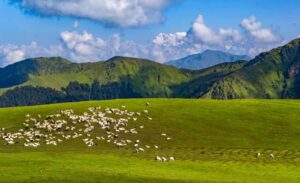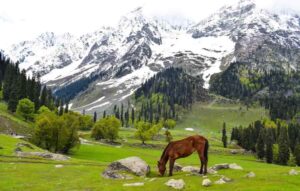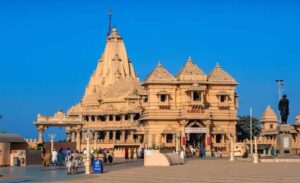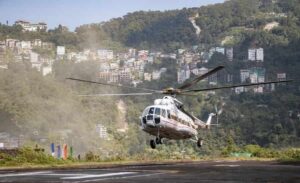Best Time to Visit Kaza
Nestled in the trans-Himalayan region of Himachal Pradesh, Kaza is a mesmerizing town that serves as the headquarters of the remote Spiti Valley. Known for its stark landscapes, ancient monasteries, and unique culture, Kaza attracts adventurers, nature lovers, and spiritual seekers alike. Choosing the right time to visit Kaza is crucial to fully experience its beauty and avoid harsh weather conditions. In this comprehensive guide, we’ll delve into the weather, temperature variations, and the different seasons that define Kaza throughout the year.
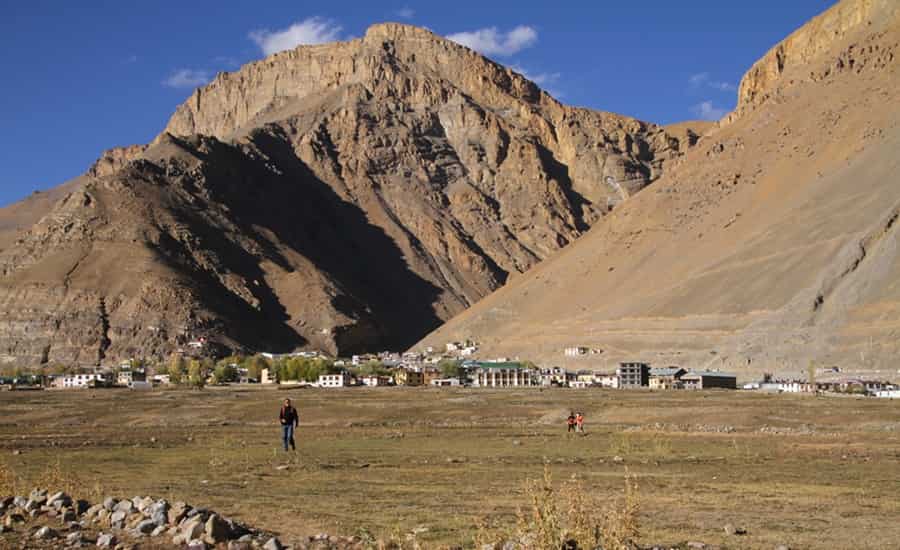
Geography
Kaza is situated at an altitude of around 3,650 meters (11,980 feet) above sea level, making it one of the highest inhabited places in India. Its high altitude and mountainous terrain significantly influence the climate, resulting in extreme temperatures and distinct seasons.
Summer (May to June)
Weather
Summer is considered the best time to visit Kaza for most travelers. During this period, the weather is relatively mild, with daytime temperatures ranging from 15°C to 25°C (59°F to 77°F). The days are long and pleasant, providing ample opportunities for exploration.
Activities
- This is the ideal time for adventure enthusiasts to indulge in trekking, camping, and exploring the nearby monasteries such as Key Monastery and Tabo Monastery.
- The snow starts to melt, revealing the stunning landscapes, and road accessibility improves, making it easier to reach Kaza.
Tips
- While daytime temperatures are comfortable, nights can still be chilly, so it’s advisable to carry warm clothing for the evenings.
- As summer is the peak tourist season, it’s recommended to make accommodation reservations in advance.
Monsoon (July to September)
Weather
Kaza experiences a brief monsoon season, but the rainfall is relatively low compared to other parts of India. Daytime temperatures remain cool, ranging from 10°C to 20°C (50°F to 68°F). However, road conditions can become challenging due to occasional landslides.
Activities
- While trekking and other outdoor activities are still possible, it’s essential to stay updated on weather conditions, as sudden downpours can affect plans.
- The landscapes are lush and vibrant during this time, offering a different perspective on the region’s beauty.
Tips
- Check weather forecasts regularly, and be prepared for changes in travel plans due to road disruptions.
- Carry rain gear and waterproof clothing, especially if planning outdoor activities.
Autumn (October to November)
Weather
Autumn is another excellent time to visit Kaza, as the weather remains clear, and temperatures hover between 5°C to 15°C (41°F to 59°F). The days are crisp, and the nights start to get colder.
Activities
- The landscapes take on a golden hue as the vegetation begins to change color, providing stunning photo opportunities.
- It’s an ideal time for trekking and exploring the Spiti Valley with fewer tourists around.
Tips
- As winter approaches, temperatures can drop rapidly, so it’s crucial to pack accordingly.
- Accommodations and transportation options may be limited compared to the summer months, so plan ahead.
4. Winter (December to April)
Weather
Winter in Kaza is severe, with temperatures plummeting below freezing, often reaching as low as -15°C to -30°C (5°F to -22°F). The region receives heavy snowfall, and many parts become inaccessible due to road closures.
Activities
- Winter is a challenging time to visit, but it offers a unique experience for those seeking solitude and breathtaking snow-covered landscapes.
- Some monasteries may remain open, but outdoor activities are limited due to the harsh conditions.
Tips
- If you plan to visit during winter, ensure you are well-prepared with heavy winter clothing and check the status of road accessibility.
- It’s advisable to consult local authorities and guides for the latest information on weather conditions and travel restrictions.
Conclusion
Choosing the best time to visit Kaza depends on individual preferences and tolerance for varying weather conditions. While summer and autumn are generally considered the most favorable seasons, each period offers a distinctive experience of Kaza’s natural beauty. Whether you’re drawn to the vibrant landscapes of summer, the lushness of monsoon, the golden hues of autumn, or the pristine snowscapes of winter, Kaza has something to offer throughout the year. Regardless of the season, the key to a successful visit is careful planning and a willingness to adapt to the unique challenges presented by this high-altitude destination.
Also Read:

